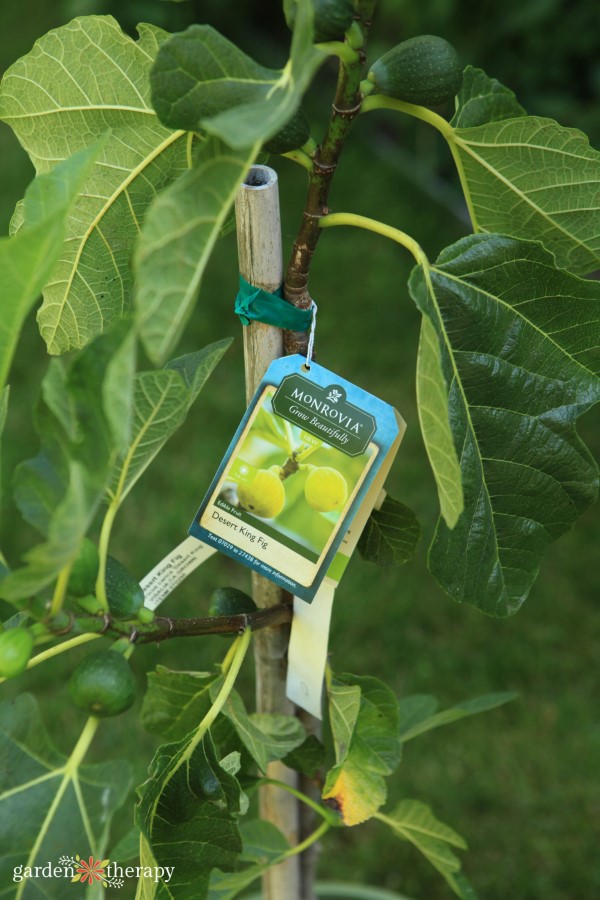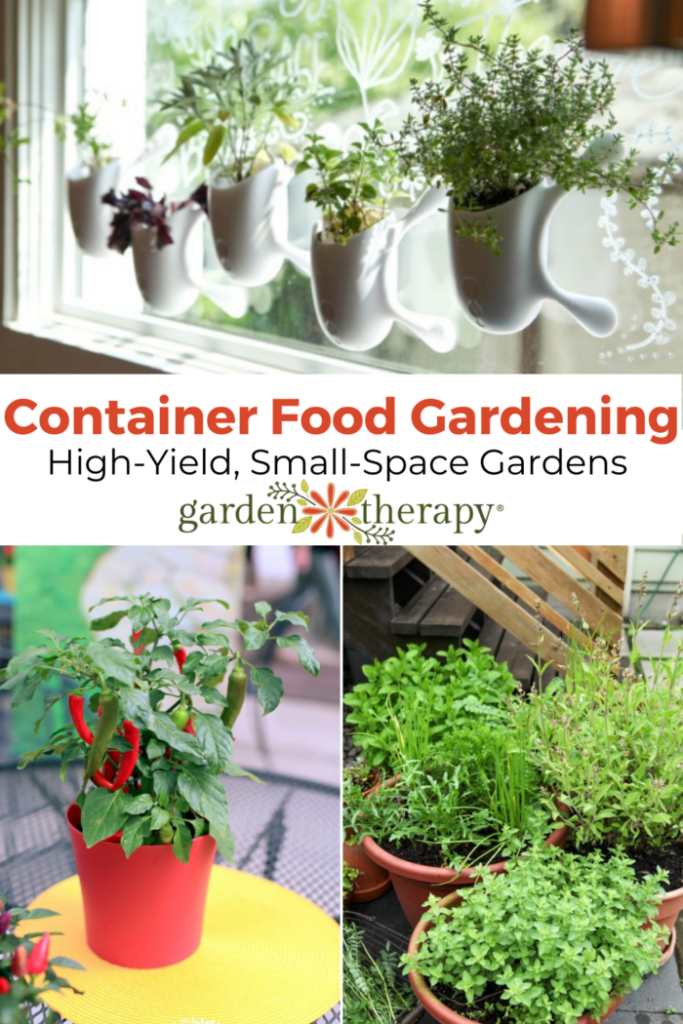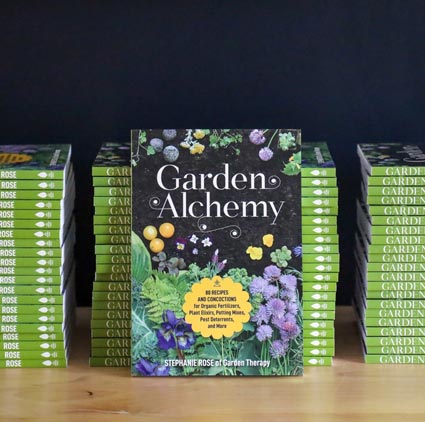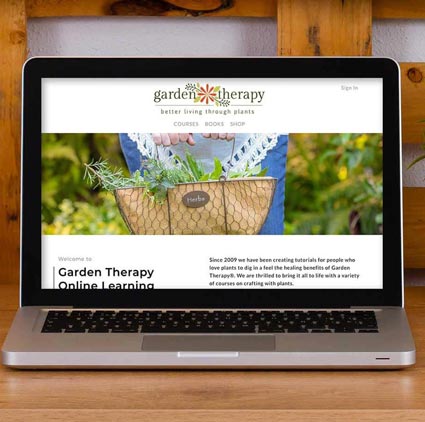Anyone can grow food in the garden, patio, or balcony by using containers. You’d be surprised how much you can eat from a container garden or two. They’re great starting points for new gardeners or those with limited space. Here are some tried and true container garden ideas that will grow plenty of food this season.
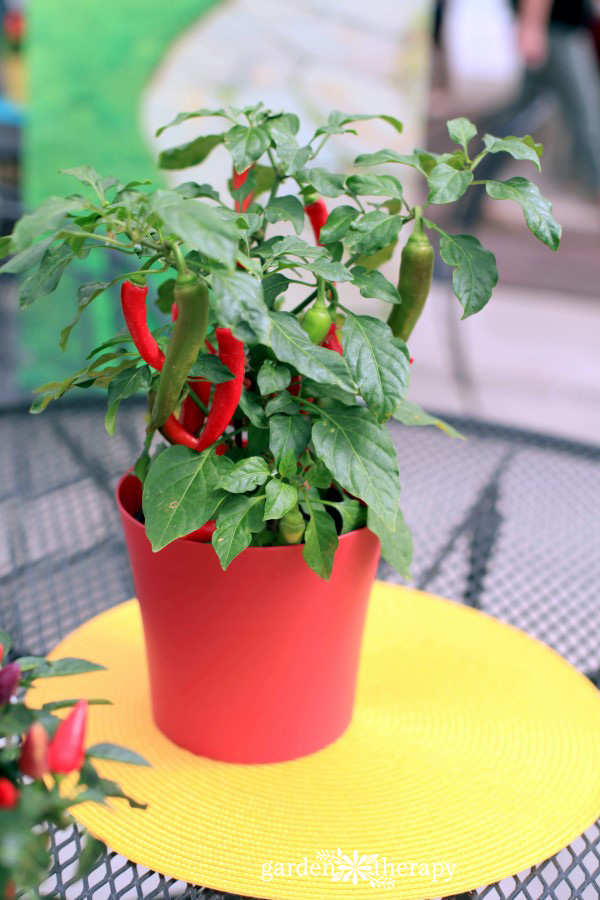
When I first started food gardening, I didn’t have a ton of in-ground space or raised beds. This meant I grew tons of vegetables in containers and saw that you could grow pretty much anything you wanted in a container with a little ingenuity.
Sometimes, it made sense, like tumbler tomatoes. Sometimes, I was growing weirder things like fennel bulbs. I grew anything I could get my hands on!
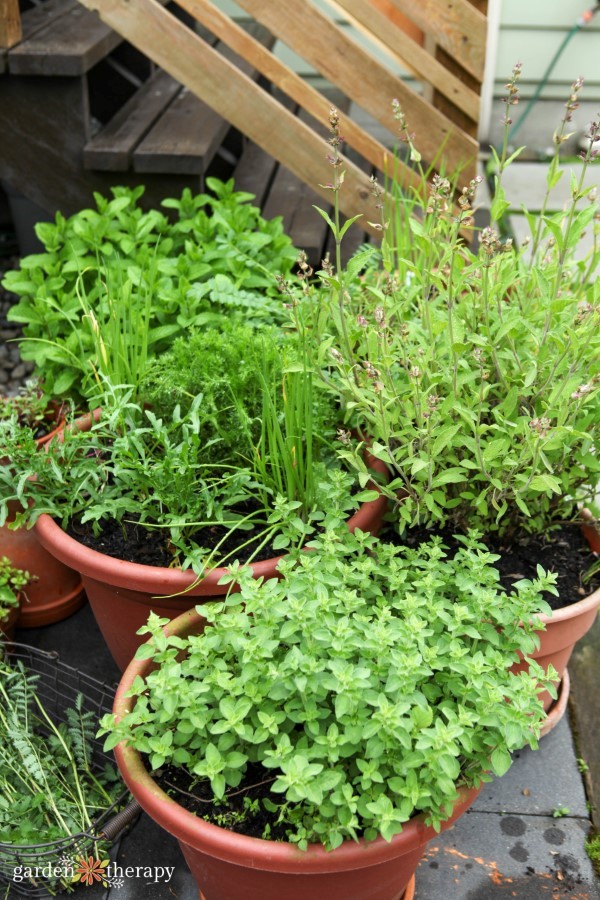
When my book publisher reached out to me to ask if I had any photos of growing food in containers, I replied, I’ve got hundreds. What do you want?
This led me to have almost 15 photos inside Pamela Farley’s new book, The First-Time Gardener: Container Food Gardening.
When I saw the book, I was amazed at how much information was inside. Pamela did an amazing job breaking it all down so that anyone could grow edible food regardless of their type of garden.
This is a big reason I love working with my publisher, as they make thorough books by skilled authors. I’m thrilled to be part of such a great team!
Today, I’m sharing some of Pamela’s container garden ideas for growing food. These are some stellar plant combinations that grow well together and have similar needs for easy growing.
This post will cover…
- Expert Tips for Container Gardens
- My Experience Growing Food in Containers
- Container Garden Ideas for Growing Food
- Salsa Garden
- Cocktail Garden
- Windowsill Herb Harden
- Tomato Sauce Garden
- Kids Garden
- Bonus: Mosquito Repellent Container
- Frequently Asked Questions About Container Gardens
- More Posts About Container Gardens
Reprinted with permission from The First-Time Gardener: Container Food Gardening : All the know-how you need to grow veggies, fruits, herbs, and other edible plants in pots by Pamela Farley © 2023. Published by Cool Springs Press. Photography courtesy of Zoe Naylor where noted.
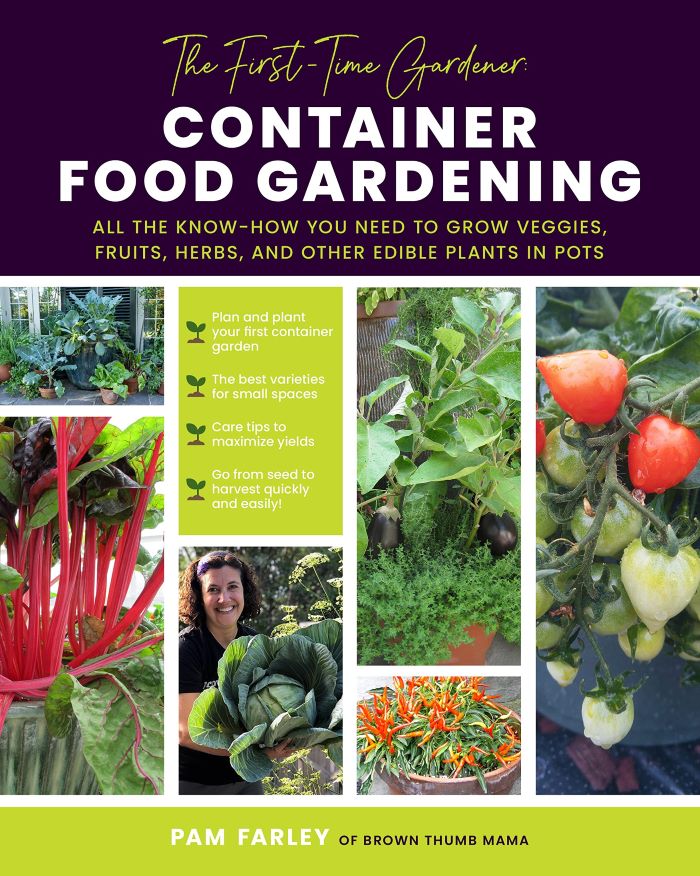
Expert Tips for Container Gardens
- The container choice is just as important as the plant choice. Some containers hold moisture better than others, while others are better suited for drought-tolerant plants.
- Focus on your container’s microclimate. In a container, the soil warms up faster, dries out quicker, and has limited root potential, which can lead to your plant fruiting earlier than average.
- Look for plants with the words “compact” or “tiny” in the title. These will be better suited for growing containers.
- Create container garden combinations by planting plants with similar growing needs with various heights and maturity sizes.
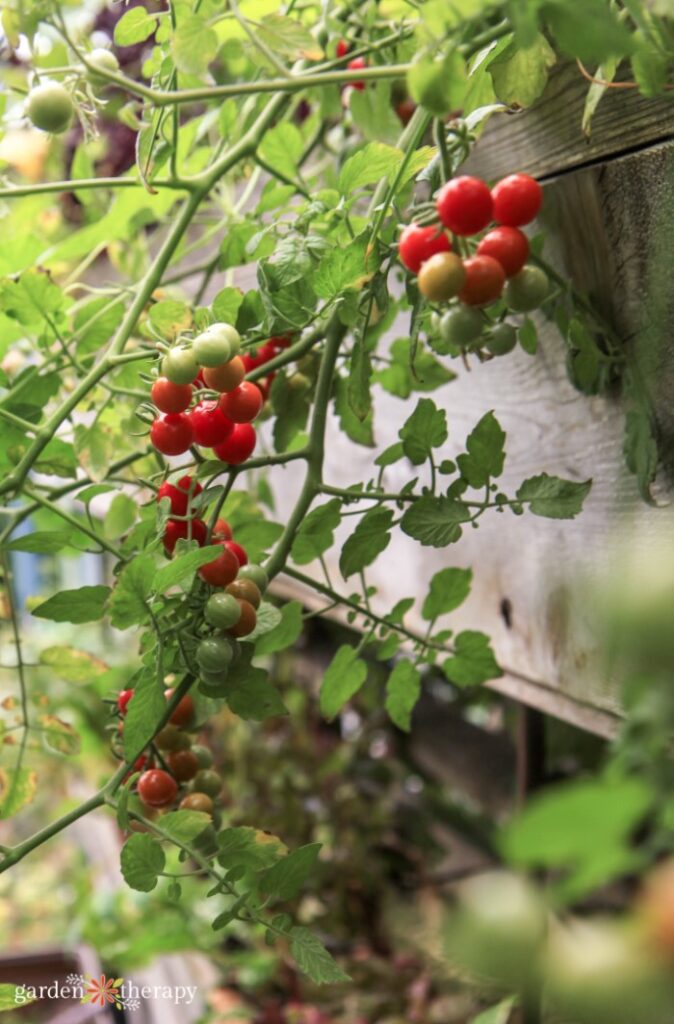
My Experience Growing Food in Containers
You learn a thing or two when you’ve grown as much food as I have in containers. The biggest takeaway when it comes to container gardening is that you have to create a mini ecosystem.
The plant isn’t the only thing you’re taking care of. It’s the pot, soil, water, and sunlight too! Everything I talk about in The Regenerative Garden has to exist in this pot.
In some regards, this makes container gardening easier and, in others, more complicated.
For instance, you need to choose the right pot. You can’t just use one you found in the alley, unless of course, it’s the perfect fit for your plant! Plastic will hold onto water, while something porous like clay will allow moisture to seep out.
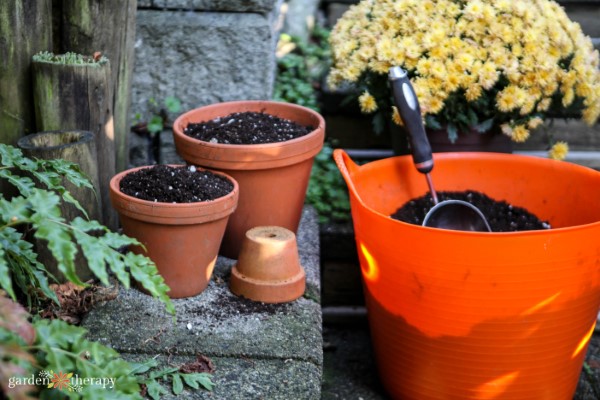
As for soil, you have to use potting soil specifically, as it allows the pot to retain moisture while keeping aeration. I make all my own potting mix for this reason.
A container will even have its own microclimate. Putting a plant in a container makes the soil more insulated and will warm up sooner. This causes a plant to grow faster. Then combined with limited root space, the plant will flower and fruit earlier since it’s stressed.
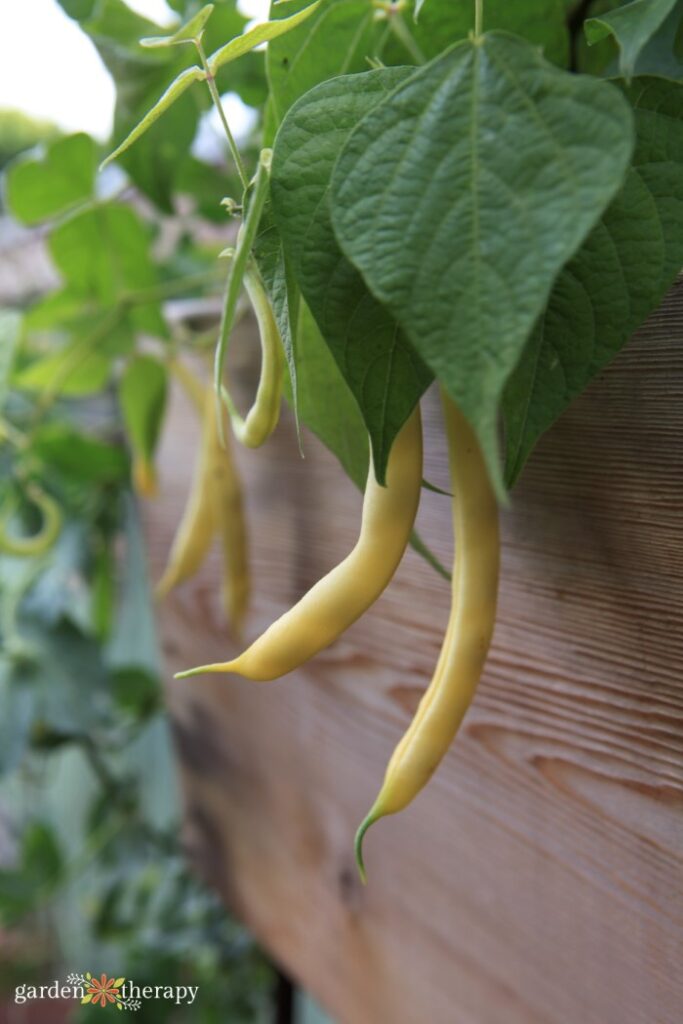
Container Garden Ideas for Growing Food
When planting plants together in a container, you want to ensure they will be good roommates. No plant should create any kind of animosity against the others! All the plants in the container should have similar water, sunlight, soil, and fertilizer needs.
Here are some container garden ideas from Pamela that have been tested and proven to get you tons of food in a small space.
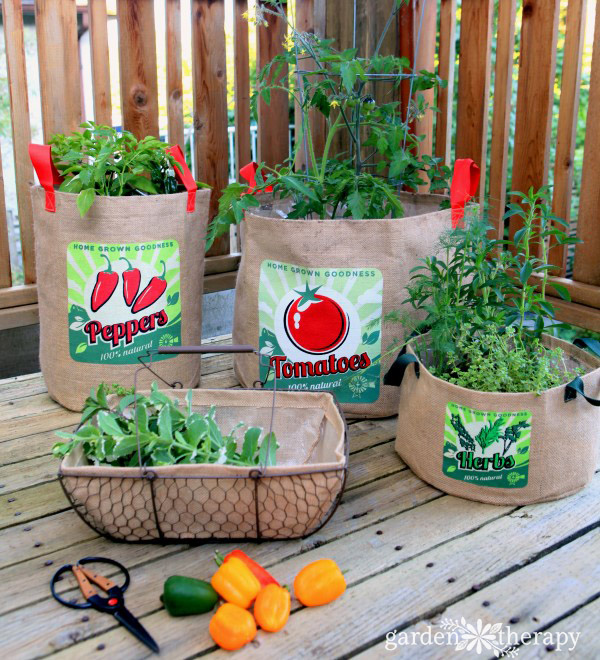
Salsa Garden
I don’t know about you, but I could eat salsa every day in the summer. It’s so crisp and fresh, tasting absolutely amazing when you grow the ingredients yourself.
This container garden idea does take a little bit of planning. “Plant the garlic in the fall and plant the other salsa ingredients in the spring,” says Pamela.
Plants:
Container size: 20 gallon (91 L)
Location: full sun.
Fertilizer: every two weeks.
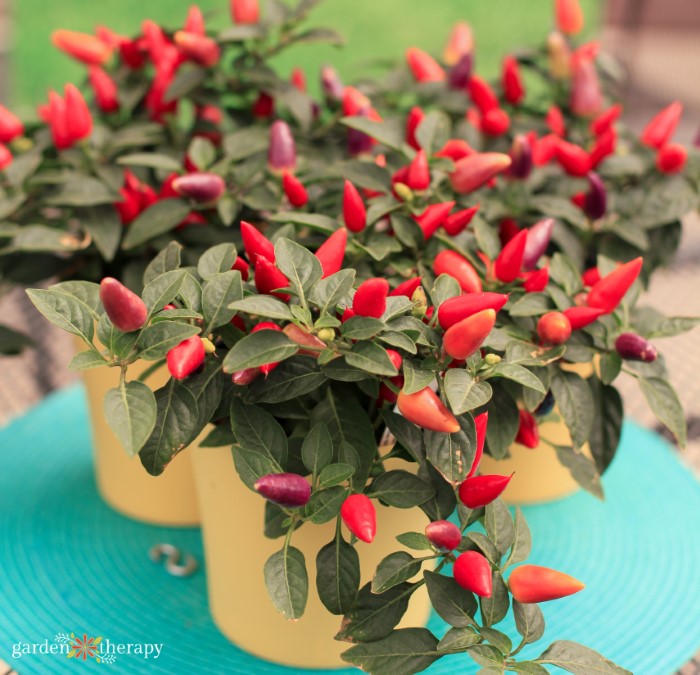
Cocktail Garden
I’m no stranger to gartending. I make plenty of garden-inspired cocktails, from making lavender syrup to growing fresh mint for mojitos.
“Plant the lemon tree in the center and cluster the herbs and strawberries in sections around it,” says Pamela. “Mint tends to take over a container, so be ruthless and pull any extra plants that sprout up.”
Plants:
- 1 Meyer lemon tree
- 6 strawberries
- 1 mint
- 4 basil
- 4 thyme
Container size: 2 gallon (9 L)
Location: bright and sunny window.
Fertilizer: when planting and two months after.
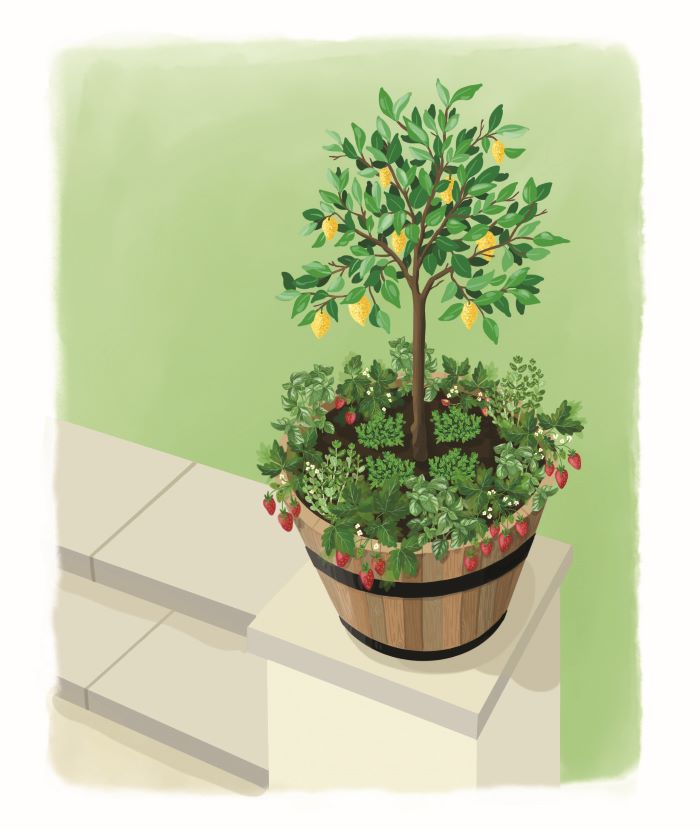
Windowsill Herb Harden
Indoor herb gardens are one of the best ways to get into gardening. Even if you have no outdoor space, you can grow one!
Here’s Pamela’s tip: “If you’re combining multiple herbs in one pot, choose a larger container that’s at least 4 inches (10 cm) deep. For a grouping of containers, several ¼-gallon (1 L) pots are ideal.”
Plants:
- 6 green onions
- 1 purple basil
- 1 green basil
- 1 parsley
- 1 oregano
Container size: 2 gallon (9 L)
Location: bright and sunny window.
Fertilizer: when planting and two months after.
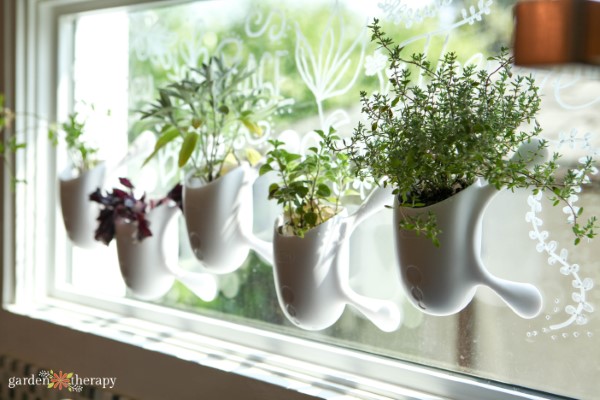
Tomato Sauce Garden
Once you make your own spaghetti sauce, anything that comes from a jar will never compare. Making a tomato sauce is also a great way to preserve your tomatoes and other vegetables when you have an overload near the end of the season.
Here’s Pamela’s tip: “If you’re growing other vegetables, you can shred them and add them in your spaghetti sauce for extra nutrition. Plant the garlic in the fall and add the other plants in the spring.”
Plants:
- 1 garlic
- 1 plum or pesto tomato
- 1 sweet pepper
- 4 basil
- 2 oregano
Container size: 20 gallon (91 L)
Location: full sun.
Fertilizer: when planting and every two weeks after.
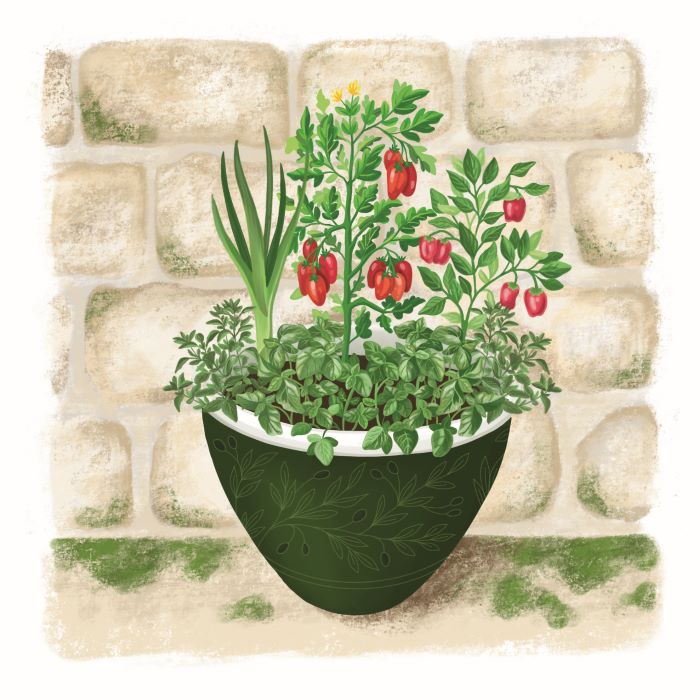
Kids Garden
As a mother of a budding gardener, I love this idea. “Kids who grow vegetables love to eat vegetables, and these are all easy to grow and snack on right off the vine,” says Pamela.
My best days in the garden are those when Kiddo joins me. He loves to pluck fruit and vegetables in his mouth fresh, so I can see how much little hands would love this container garden idea.
Plants
- 4 purple snow peas
- 1 red or yellow cherry tomato
- 4 strawberries
- 1 mini pumpkin
- 2 Persian mini cumber
Container size: 10 gallon (45 L)
Location: full sun.
Fertilizer: Every two weeks.
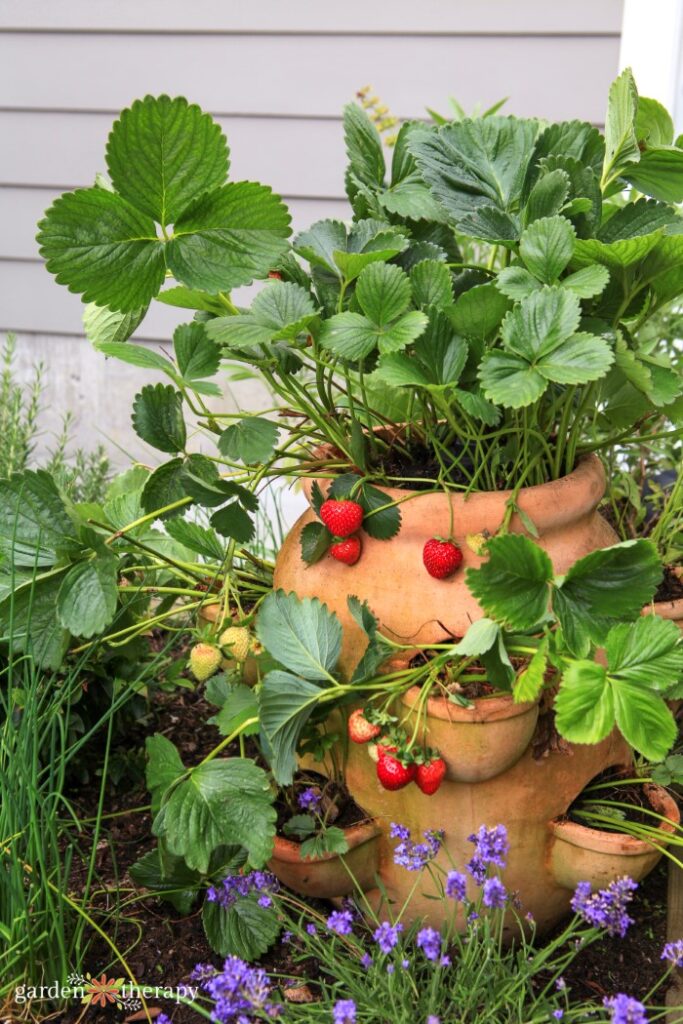
Bonus: Mosquito Repellent Container
While this container garden idea isn’t for growing food per se, this is one of my favourite go-to container gardens. I made this mosquito repellent garden during a summer when the mosquitos were exceptionally bad. And we all know how these buggers can truly ruin outdoor time!
This container garden works well on a patio or other area you like to relax in. While it’s designed for mosquitos, it does contain quite a few culinary herbs. Double-duty plants here!
You can see how I made my mosquito repellent container here.
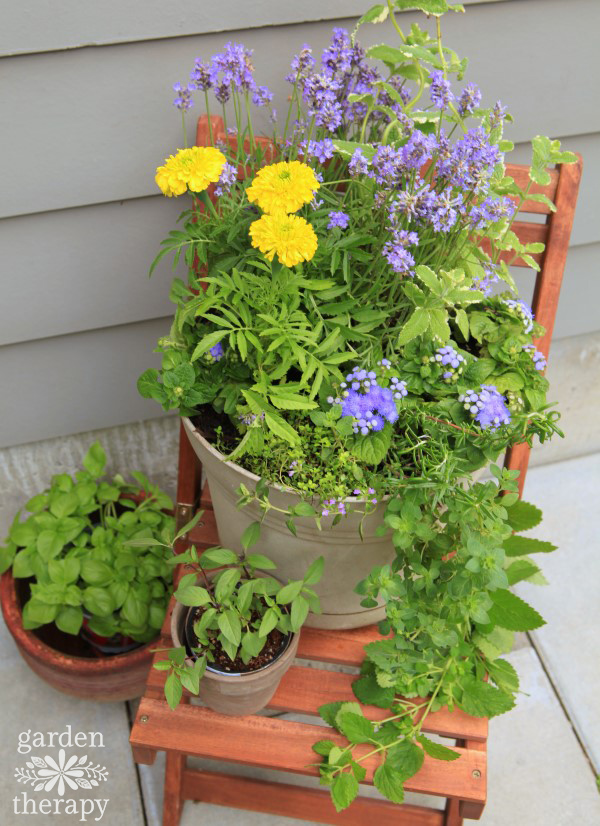
Frequently Asked Questions About Container Gardens
The minimum depth I recommend for any kind of container or raised bed is 12″ (a 5-gallon/23-litre pot). Shallow-rooted plant systems, like lettuce, can get away with less, while plants with larger root systems, such as tomatoes, need more.
“If you plan to combine several plants together into a single pot, add all of their soil volume needs together to determine how big of a pot you need for all of them in,” says Pamela.
You can see my general guidelines for container depth here.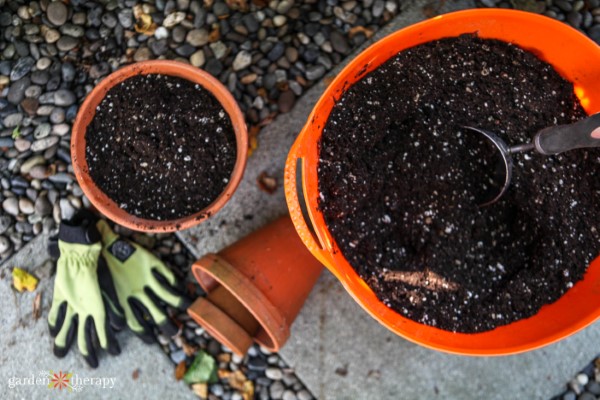
Start off with just a few containers. You don’t want to overwhelm yourself! You can either purchase the plants when they’re small from the garden centre or start the seedlings indoors yourself.
Consider the type of container you’re growing and the plant’s needs. The depth and width of the container are also important factors depending on the plant’s root systems and how many plants you want to put in the container.
The good thing about containers is that you can move them. Try to find a spot in your garden with the right light needs for your plant. Keep an eye on containers for watering, as they will dry out faster than plants in the ground.
Plants in containers will also need fertilizer since they can’t access extra nutrients from the ground. Every other week or once a month is usually enough for containers during the growing season.
It depends on the container. A container that is quite wide can fit plenty of plants. On average, when you are brainstorming your container garden ideas, plan for 1 large plant, 2 medium plants, 6 small plants, and 4 hanging plants. Just make sure to play with height and size, avoiding planting plants that are all the same size.
